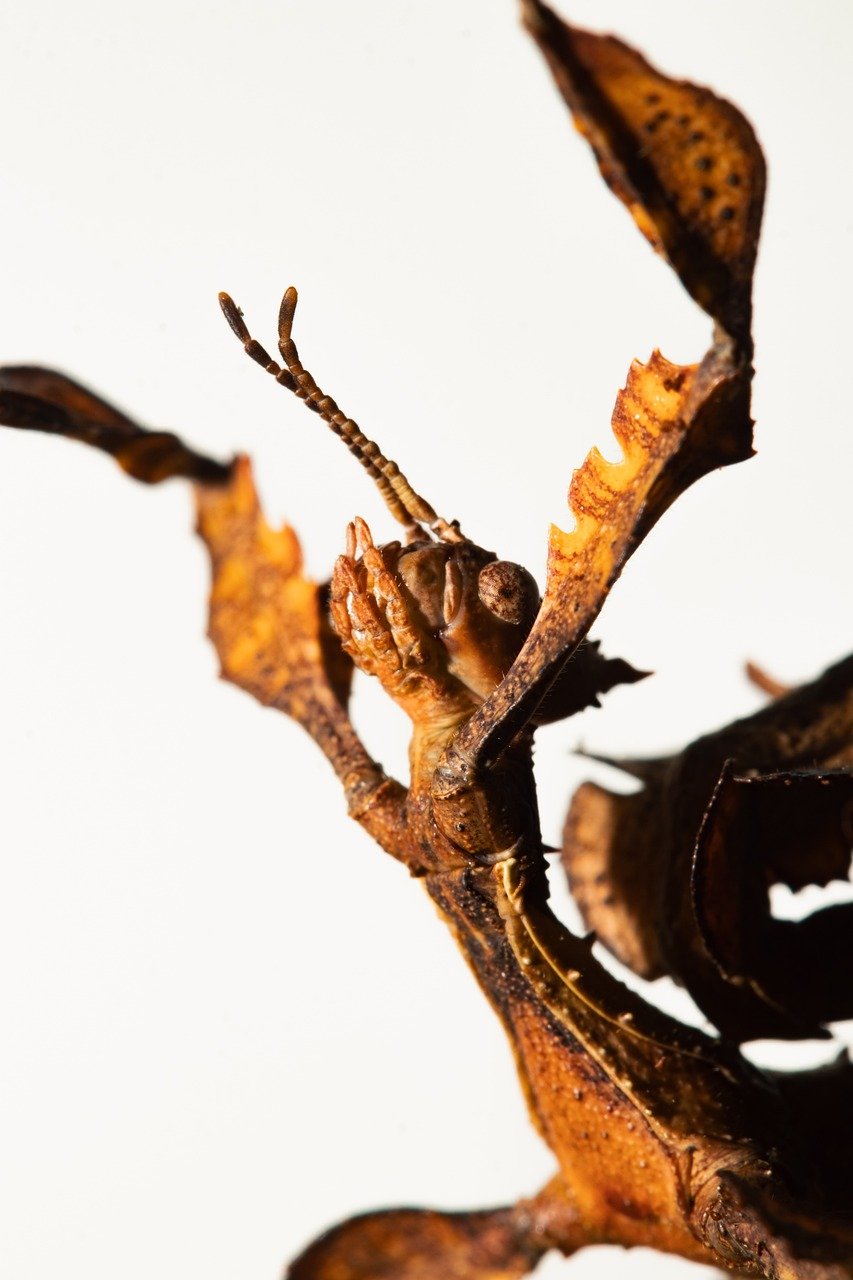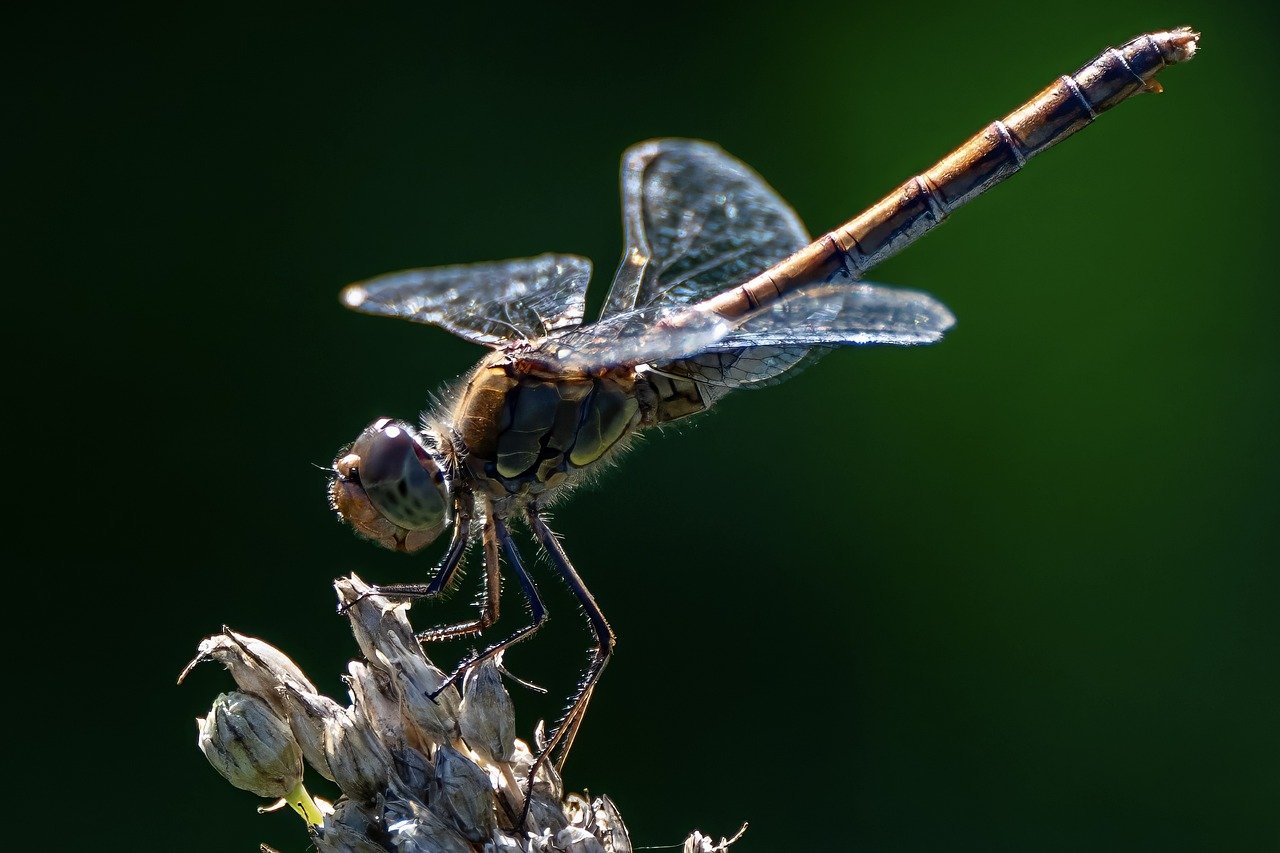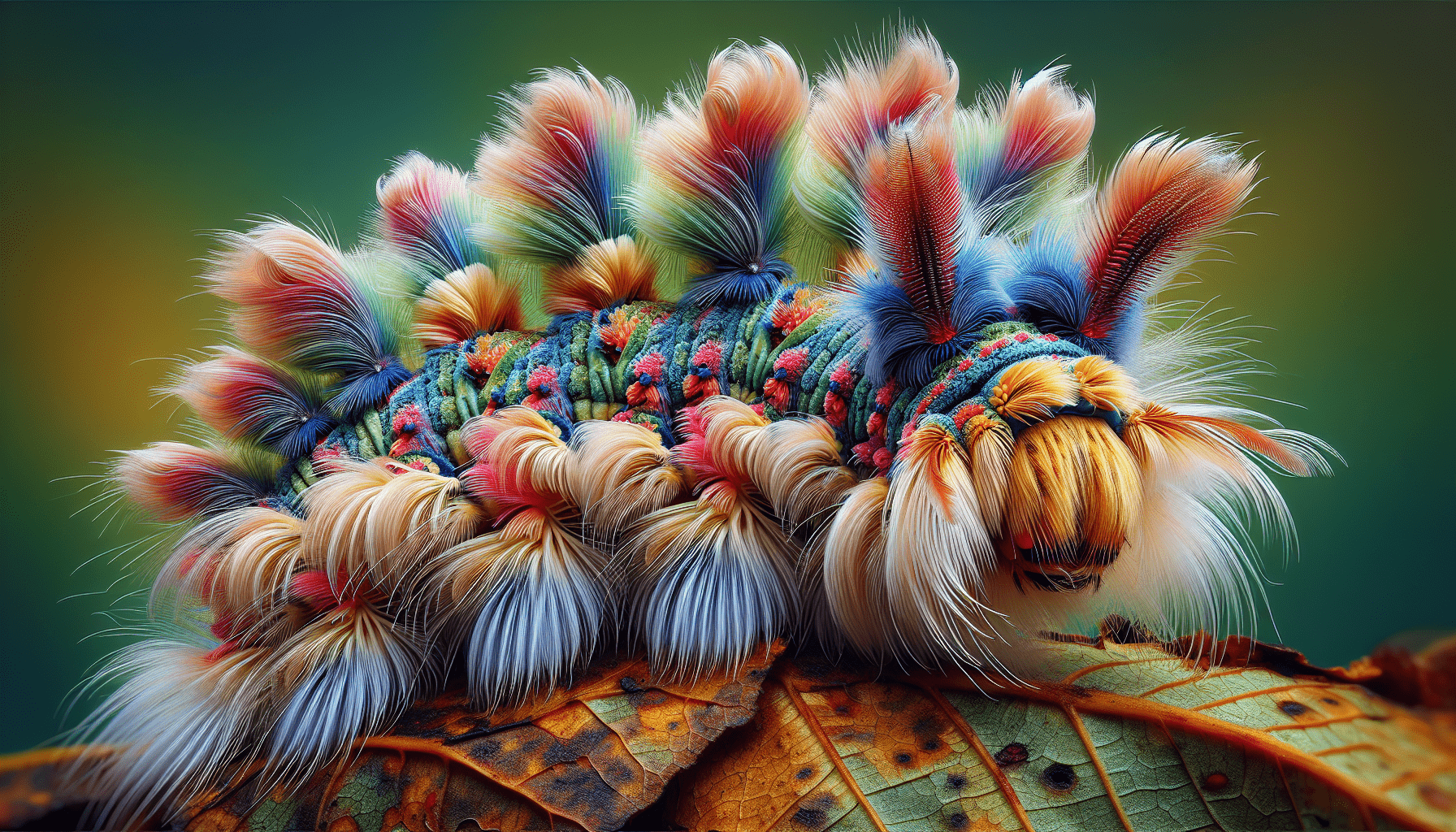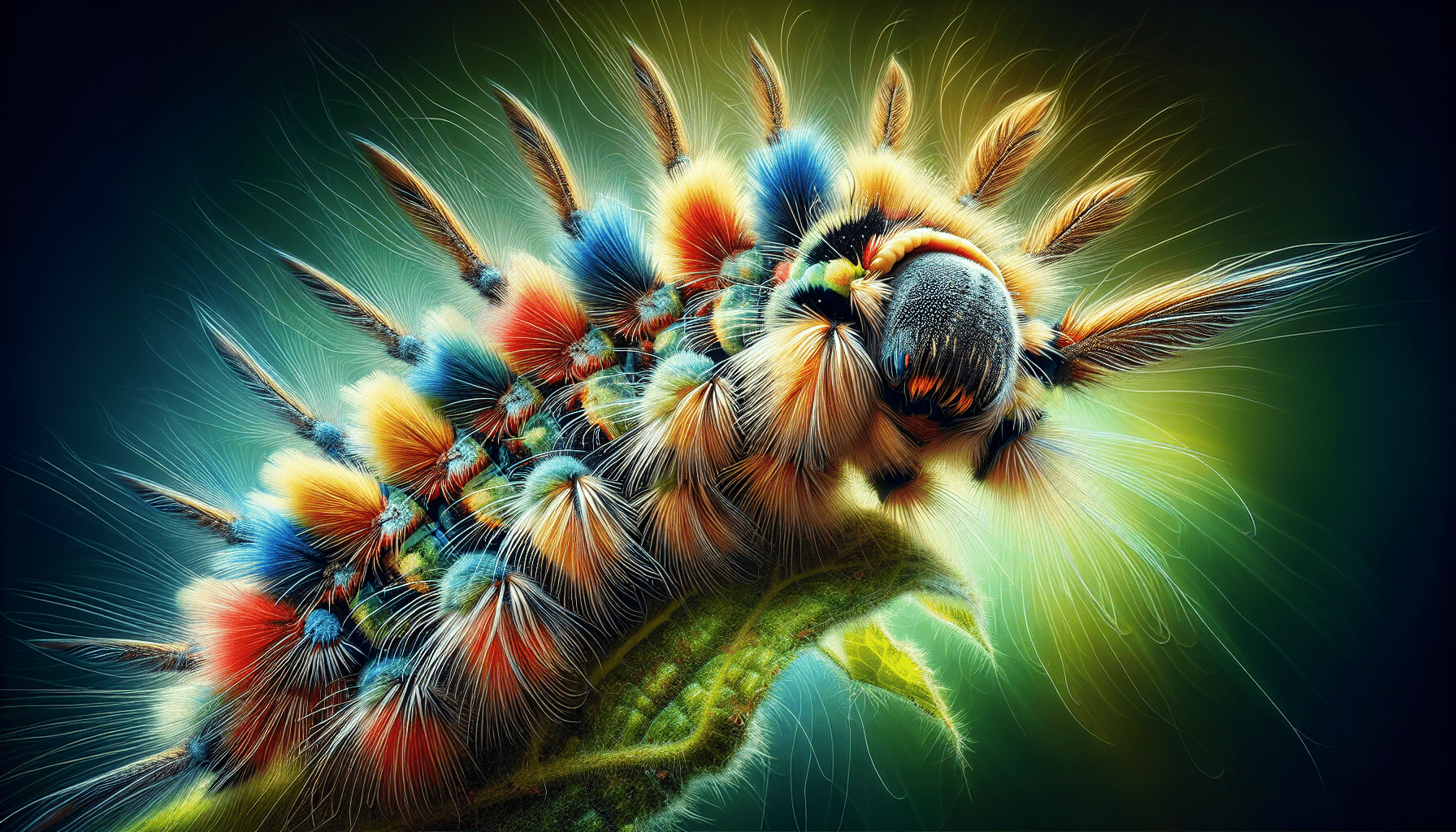Have you ever stopped to consider the texture of an insect? Beneath their myriad forms and myriad colors, an entire world exists that surprises many: the realm of furry insects. These aren’t just mere curiosities but are fascinating representatives of nature’s intricacy and adaptability.
The Furry Phenomenon in Insects
Insects with fur might sound like characters straight out of children’s stories, but they are quite real and enthralling. Furry insects spark curiosity and question traditional perceptions of what insects typically look like. This mirage of soft, whimsical creatures flits through the air, carrying out everyday tasks invisibly enriching our ecosystem.
What Types of Insects Have Fur?
Many types of insects sport fur-like structures, ranging from bees to moths to caterpillars. Their fur isn’t just for show; it serves essential functions like insulation, sensory input, and protection. Let’s look at some prime examples.
Furry Bees
Perhaps the most familiar furry insects are bees. Their bodies are covered in tiny hairs that collect pollen, which clings to the surface as they fly from flower to flower. These hairs are crucial for pollination, enabling the transfer of pollen needed for plant reproduction.
Moth Marvels
Moths often have a notable amount of fur or scales that can look like fur. This fuzz helps with thermoregulation, insulation, and camouflage. The diverse and colorful patterns of their ‘fur’ also play roles in mate attraction and deterring predators.
Caterpillar Wonders
Caterpillars, especially those of certain moth and butterfly species, are notorious for their fur-like bristles. These can range from harmless soft tufts to more ominous spines that carry toxins as a defense mechanism against predators.
The Functions of Insect Fur
The fur on insects is not merely for show. It acts as a multi-purpose tool, aiding in survival and efficiency in various ways.
Insulation and Temperature Regulation
Insects, like bees, use their fur for temperature control. The tiny hairs trap a layer of air, which acts as insulation, keeping the insect warm in cooler temperatures. This is particularly essential for bees, which need to maintain a certain body temperature to be active and capable of foraging.
Sensory Functions
The fur on insects is often linked with sensory abilities. These hairs can serve as extensions of their nervous system, helping to detect changes in airflow, touch, humidity, and even sound vibrations. Think of it as a multi-functional sensory apparatus that plays a key role in an insect’s interaction with its environment.
Defense Mechanisms
For some insects, fur acts as a deterrent against predators. Certain caterpillars, for instance, sport urticating hairs, thin spines or bristles that can inject toxins into would-be attackers, causing irritation or allergic reactions. This defense strategy keeps many predators at bay.
Aiding in Pollination
Fur on insects like bees is also paramount in pollination. The tiny hairs on their bodies capture pollen grains efficiently, aiding in the cross-pollination of plants. This is crucial not only for the reproduction of flora but also for the global ecosystem, making furry insects pivotal biodiversity contributors.

The Evolution of Fur in Insects
Understanding why and how these furry coverings evolved brings more clarity to the intriguing world of insects. Evolutionary biologists suggest that these traits developed over millions of years, optimizing insects’ chances of survival and reproduction.
Adaptation Over Time
The development of fur in insects is believed to have emerged as an adaptive mechanism. For example, in cold environments, fur’s insulatory properties would have provided a significant advantage. Subsequently, these traits would have become more prominent through natural selection.
Mimicry and Camouflage
For others, fur has evolved as a means of camouflage. The furry exteriors of many moths mimic their surroundings, helping them evade predators. This mimetic adaptation adds another layer of complexity and sophistication to the evolutionary tapestry of the insect world.
Sensory Enhancement
In many cases, the sensory enhancement provided by hair-like structures evolved to improve interaction with the environment. Insects with more refined sensory capabilities could better detect prey, avoid predators, and find mates, thus proving more successful in passing on their genes.
Noteworthy Examples of Furry Insects
The world of furry insects is vast and fascinating, with numerous species standing out for their unique characteristics. Let’s delve into some noteworthy examples.
The Puss Moth Caterpillar
Resembling a small, furry animal, the Puss Moth Caterpillar is a fascinating example of a furry insect. Covering its body in soft, fur-like hairs, it offers a deceptive appearance. However, this creature should not be underestimated, as it can release toxins when threatened.
The Bumblebee
Perhaps one of the most loved and easily recognizable, the Bumblebee is a quintessential furry insect. Their soft, fluffy exteriors aren’t just endearing; they play a key role in thermal regulation and pollination.
| Insect | Fur Function | Notable Trait |
|---|---|---|
| Bumblebee | Insulation, Pollination | Soft, fluffy exterior |
| Puss Moth Caterpillar | Defense, Camouflage | Toxin-releasing urticating hairs |
| Woolly Bear Caterpillar | Thermoregulation, Defense | Thick fur to survive cold climates |
The Woolly Bear Caterpillar
This caterpillar is covered with dense, fuzzy hair that aids in surviving extremely cold temperatures. Interestingly, the Woolly Bear Caterpillar can freeze solid during winter and continue its development come spring, making it a true marvel of adaptation.

Myths and Misconceptions
It’s fascinating how myths and misconceptions surround the insect kingdom’s furry inhabitants. Let’s clear up some of the misconceptions often associated with these unique creatures.
Misconception: Furry Insects are Always Dangerous
While some furry insects, like the Puss Moth Caterpillar, can be dangerous due to their ability to inject toxins, not all furry insects pose a threat. Many are harmless and simply use their fur for thermoregulation, sensory input, or camouflage.
Misconception: All Furry Insects are Pollinators
While bees and some beetles are furry pollinators, other furry insects, like certain moths and caterpillars, do not play a role in pollination. Their fur serves different purposes, such as insulation or defense mechanisms.
Misconception: Fur Indicates Dominance in Predators
Fur in insects doesn’t necessarily signify a dominant position in the food chain. Instead, it often serves as a defensive mechanism, helping these insects evade predators rather than hunt them.
Interaction with Ecosystems
The role of furry insects extends far beyond their beauty or novelty; they are integral to healthy ecosystems. Through their varied functions, they impact other flora and fauna significantly.
Pollinators and Plant Life
Bees and other pollinators play indispensable roles in fertilizing plants, helping produce fruits, seeds, and flowers. This process impacts not just the plants themselves but also the animals that rely on these plants for food.
Part of the Food Chain
Furry insects serve as essential food sources for various birds, mammals, and other insects. Their role in the food chain maintains balance within ecosystems, ensuring stability and biodiversity.
Soil Health and Decomposition
Some furry insects contribute to soil health. By breaking down organic matter, they promote nutrient recycling, ensuring fertile soil for future plant growth.

Furry Insects and Human Fascination
Humans have always been intrigued by the myriad forms life takes, and furry insects are no different. From scientific research to artistic inspiration, these creatures leave a significant impact.
Scientific Research
Researchers study furry insects to learn more about their unique adaptations. Insights gained from these studies can inform various fields, from biomimicry in robotics to advancements in understanding ecological relationships.
Artistic Inspiration
Artists often draw inspiration from the natural world, with furry insects providing a rich source of creativity. Their vibrant colors, intricate patterns, and unique textures find their way into art, fashion, and design.
Educational Significance
Furry insects serve as interesting subjects for educational programs, igniting curiosity and wonder in students. They provide tangible examples of adaptation, evolution, and ecological dynamics, making abstract concepts more relatable.
Furry Robots: A Step Towards a Softer Future
Surprisingly, the fascination with furry textures isn’t limited to natural creatures. Advances in robotics have given rise to furry robots designed to provide comfort and companionship.
The Role of Fur in Robotics
The addition of fur to robots serves multiple purposes. It provides a tactile, soothing sensation, making the robots more appealing and approachable, especially in therapeutic settings. Patients, especially children and the elderly, often find these furry robots comforting and emotionally supportive.
Therapeutic Benefits
Furry robots are proving invaluable in therapy, especially for those dealing with emotional or physical stress. The texture of fur can have a calming effect, making interactions with these robots both comforting and beneficial.
Future Prospects
The realm of furry robots is expanding, potentially paving the way for more empathetic and emotionally intelligent machines. Integrating tactile feedback and sensory input mimicking natural counterparts could revolutionize how we view and interact with robots.

Everyday Furry Encounters
Beyond the world of insects and robots, furry textures have infiltrated everyday life in amusing and sometimes exasperating ways. Pet owners will attest to the constant battle against fur-covered clothes and furniture.
Home Décor
Furry cushions, throws, and furniture add a touch of warmth and coziness to homes. The tactile enjoyment derived from these items explains their growing popularity in interior design.
Fashion Statements
Furry elements in fashion have long been signs of luxury and style. Recently, faux fur has become trendy, offering the luxurious feel of real fur without ethical concerns. This shift reflects broader societal trends towards sustainable and ethical consumption.
The Pet Fur Challenge
Living with pets often means dealing with fur invasions. Despite the constant cleaning and lint-rolling, the joy and comfort provided by furry companions make the struggle worth it.
| Aspect | Function | Example |
|---|---|---|
| Home Décor | Adds warmth and coziness | Furry cushions, faux fur throws |
| Fashion | Statement piece, luxury | Faux fur coats and accessories |
| Pet Ownership | Comfort and companionship | Managing pet fur in homes |
Conclusion
The surprising world of furry insects opens our eyes to the incredible diversity and complexity of life around us. These fascinating creatures, often overlooked, contribute significantly to ecosystems, provide inspiration for technology, and add texture to our daily lives. Whether in the wild, as part of innovative designs, or as integral parts of our homes, fur continues to surprise, charm, and sometimes even challenge us. Would it not be incredible to view the world through this micro-lens and appreciate the understated wonders of such small yet remarkably impactful creatures?

